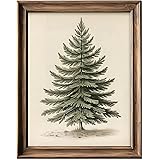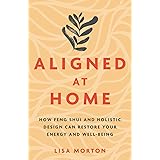Decoding Tomorrow’s Gardens: The Evolution of Landscape Design in 2025
Are you ready to transform your outdoor space into a sanctuary that marries artistic vision with environmental responsibility? As beautifully articulated in the video above, the world of landscape design is undergoing a profound evolution, moving beyond mere aesthetics to embrace functionality, sustainability, and sensory engagement. In 2025, modern garden design is being redefined by innovative approaches that prioritize balance, technological integration, and a deep respect for natural ecosystems.
This comprehensive guide delves deeper into the captivating garden trends of 2025, expanding on the insights shared in the video to help you envision and create your own future-forward landscape.
1. Symmetry and Fluidity: The New Balance in Garden Design
One of the most striking characteristics of landscape design 2025 is the sophisticated interplay of symmetry and fluidity. This isn’t about rigid, predictable patterns; rather, a balance that feels both intentional and effortlessly organic is being sought. The careful placement of elements such as sculptured evergreens or matching beds of ornamental grasses creates a sense of harmony. However, close inspection often reveals subtle variations, ensuring that visual interest is maintained and the eye is continually engaged. This approach ensures that while structure is present, the garden retains a natural, evolving feel, a principle often observed in biophilic design, where connections to nature are prioritized.
2. Evolved Water Features: Beyond the Traditional Fountain
Water has always been a central element in gardens, yet its role is dramatically expanding. Traditional fountains are being surpassed by precisely engineered water channels that initially follow geometric patterns before subtly transitioning into naturalistic pools. It is not just the visual appeal that is considered; the sound design is meticulously planned to create diverse acoustic experiences as one moves through the garden. For example, a gentle ripple near a seating area might transition to the robust sound of a mini-waterfall further along a path. This innovative use of water is further extended through:
- Bioswales: These landscape elements are designed to remove pollution from surface runoff water. They are typically engineered depressions or channels that incorporate vegetation, compost, and often a sub-surface drainage system. When strategically integrated, bioswales transform from dry creek beds into beautiful, naturalistic waterways during rain events, managing runoff while adding aesthetic value. Studies suggest that properly designed bioswales can filter out up to 80% of urban runoff pollutants.
- Rain Gardens: Similar to bioswales, rain gardens are designed to collect and absorb stormwater runoff from impervious surfaces. These features help recharge groundwater, reduce erosion, and provide habitat for local wildlife, embodying a key principle of sustainable landscaping.
3. Seamless Integration of Hardscaping and Softscaping
The marriage of hard and soft landscaping elements is reaching unprecedented levels of sophistication. This involves more than just placing plants next to paving; it’s about blending materials and textures to create a cohesive, immersive experience. Pathways of irregular stone slabs, for instance, are meticulously set within gravel beds, their edges softened by creeping thyme or moss, inviting one to stroll leisurely. Dramatic shadows are cast by uplighting through sculptured trees, while path lighting is designed to appear as if fireflies are gently illuminating the ground cover. This attention to detail transforms functional elements into integral design features.
4. Modern Fencing and Living Walls: Boundaries as Art
The days of simple privacy screens are largely becoming a thing of the past. Modern boundaries are increasingly becoming living walls or architectural frameworks through which carefully selected climbers weave intricate patterns. These living structures evolve with the seasons, offering dynamic visual interest. The interplay of light and shadow through these designs adds another dimension to the garden’s overall aesthetic, creating ever-changing art. Beyond their visual appeal, living walls contribute significantly to biodiversity, support local wildlife, and can even help insulate a property, leading to potential energy savings of 10-20%.
5. The Sculptural Lawn: More Than Just a Green Carpet
The lawn, traditionally a flat expanse, is now treated as a sculptural element. Different mowing heights are employed to create subtle patterns, while curved edges flow into planted borders with mathematical precision. This approach elevates the lawn from a passive element to an active participant in the garden’s design. Crucially, drought-resistant grass varieties are being widely introduced, such as certain fescue blends or Zoysia grass, which maintain their beauty with minimal water consumption. This aligns with a broader push for sustainable landscape design, where reducing water usage is paramount.
6. The Psychology of Color: Guiding the Eye Through the Garden
Color psychology plays a vital role in modern garden design. Cool blues and silvers often dominate the palette, offering a serene and expansive feel, reminiscent of tranquil waters or distant skies. These calming tones are punctuated by carefully chosen accent colors—perhaps a vibrant coral or deep burgundy—that guide the eye through specific areas of the space. The plant selection is meticulously curated to ensure a progression of color throughout the year, ensuring the garden remains dynamic and engaging in every season. For example, early spring bulbs might give way to summer perennials, followed by autumnal foliage and evergreen structures for winter interest.
7. Vertical Elements and Garden Rooms: Layered Design
Vertical elements are ingeniously used to create distinct “rooms” within the garden, providing privacy while maintaining a sense of openness and flow. Trained fruit trees, known as espaliers or step-over forms, create living walls or elegant low borders, adding both beauty and productivity. These green architectonic elements are chosen not just for their yield but also for their year-round architectural qualities. A layered garden design, encompassing ground-level plantings, mid-height architectural elements, climbing species, and even canopy layers, provides multiple benefits:
- Microclimates: Each layer helps regulate temperature and humidity.
- Biodiversity: Different heights support a wider range of plant and animal life.
- Visual Interest: Depth and complexity are added to the garden’s aesthetic.
- Productive Integration: Fruit trees, herbs, and even vegetables are woven into ornamental designs, blurring the lines between edible and decorative gardening.
8. Subtle Technology Integration for a Smarter Garden
The integration of technology in modern landscape design is significant, yet it is designed to be largely invisible. Smart irrigation systems, for instance, respond to real-time weather data, adjusting watering schedules to prevent waste. Soil sensors monitor nutrient levels and moisture, ensuring plants receive precisely what they need, preventing both overwatering and nutrient deficiencies. These high-tech elements maintain the garden’s serene and natural appearance, enhancing efficiency without detracting from the aesthetic. Reports indicate that smart irrigation can reduce outdoor water usage by an average of 30-50% annually, a substantial saving for homeowners.
9. Sustainability as a Foundational Principle
Sustainability is more than a trend; it is a fundamental aspect of landscape design in 2025. Every element is chosen to serve multiple purposes, contributing to a healthier environment and reducing the garden’s ecological footprint. This includes:
- Permeable Surfaces: Materials like gravel, pervious concrete, or porous pavers manage water runoff, reducing the strain on municipal stormwater systems. These can reduce runoff by up to 80% compared to traditional impervious surfaces.
- Plant Selection for Wildlife: Native plants and those supporting local pollinators are prioritized, fostering biodiversity. A native plant garden typically requires 30% less maintenance and water than a traditional ornamental garden.
- Eco-conscious Materials: Materials are chosen not just for their aesthetic appeal but also for their environmental credentials, such as recycled content, local sourcing, and low embodied energy.
- Compost Integration: Efficient compost systems are integrated into the design, often disguised as decorative elements, transforming organic waste into nutrient-rich soil amendments.
10. Climate Moderation: Designing for Comfort and Resilience
Climate moderation has become a central focus. Strategic placement of water features, careful manipulation of airflow through the garden (e.g., windbreaks using dense plantings), and the creation of microclimate zones allow these spaces to naturally regulate temperature. This passive climate control extends the usability of outdoor spaces while reducing energy consumption within the home. Plants are selected not just for their current suitability but for their ability to thrive in predicted future conditions, showcasing a forward-thinking approach that prepares gardens for environmental change and ensures their longevity.
The thoughtful evolution of landscape design in 2025 reflects a deeper understanding of our connection to nature and our responsibility to the planet. These dynamic, carefully composed gardens engage all the senses, promising spaces that mature and develop, becoming richer and more complex with each passing season.











